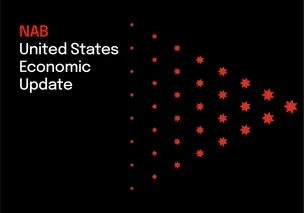28 August 2025
May 8, 2025
NAB Australian Commercial Property Survey Q1 2025
The NAB Commercial Property Index lifted to an 8-year high in the March quarter, continuing the run of improvements seen in recent quarters.
Confidence levels also improved to multi-year highs and printed positive in all sectors and states (except VIC where it remains negative for office and retail property in the next 12 months). Amid expectations for further rate cuts ahead, property professionals expect capital and rents to grow in all sectors in the next 1-2 years.
Survey highlights
- Commercial property market sentiment hit an 8-year high in the March quarter with the NAB Commercial Property Index printing at a well above average +24 pts, continuing the run of improvements seen in recent quarters. February’s rate cut and promises of more to come (NAB has rates moving down through 2025 to 2.85% by November) are likely to have helped fuelled optimism in the sector.
- Sentiment was highest for CBD hotel property in March (steady at +50). It rallied in industrial (up 4 to +46) and retail (up 24 to +17 and the first positive read since Q3 2017) and printed positive for the second consecutive quarter for office property (up 6 to +11). Sentiment improved and was highest in QLD (up 19 to +47) and NSW (up 4 to +14) but eased in SA/NT (down 1 to +43) and WA (down 9 to +40) but remained well above the national average. Despite narrowing, VIC again printed negative (up 15 to -16), and also lagged in all property sectors, particularly office and retail.
- Confidence strengthened with the 12-month measure reaching a 7½-year high +38 (from +27) and 2-year measure rising to its highest level in over 13 years (up 17 to +53). Confidence levels are highest for CBD hotels property in both years (+83 & +100), and lowest for office in the next 12 months (+25) and retail in 2 years’ time (+34). Confidence scored positive for all sectors and states (except VIC for office (-25) and retail (-13) in the next 12 months). Confidence for office property in the next 1-2 years is highest in QLD (+70 & +80), in WA (+80) for retail in 12 months’ time and SA/NT in 2 years’ time (+75) and industrial in SA/NT (+86 in both years).
- The average survey prediction for capital growth in the next 12 months is highest for industrial (2.4%) and CBD hotels (0.6%). Modest gains also forecast for office (0.3%) and retail (0.2%) for the first time in a number of years. Expectations for office values next year are still negative in VIC (-5.1%) but tipped to grow in all other states led by QLD (3.1%). The outlook for retail is highest in WA (3.6%) and lowest in VIC (-2.0%) and NSW (-1.3%). Capital growth expectations are positive in all states for industrial, ranging from 1.7% in VIC to 3.4% in WA. Values are expected to grow in all sectors in 2 years’ time led by industrial (3.1%) with retail trailing (1.1%). Values are tipped to rise in all state markets except office (-2.5%) and retail (-0.5%) in VIC and retail in NSW (flat).
- Survey participants on average pointed to a deterioration in overall office vacancy to 11.4% in March (from 10.3%), with vacancy higher in all states but ranging from 8.5% in QLD to 15.0% in VIC where the market was assessed as ‘very’ over-supplied. National office vacancy is expected to fall to 10.8% and 9.8% in the next 1-2 years with VIC the only state still in double digits over this period (14.0% & 12.5%). Industrial vacancy tightened to 3.2% (from 3.4%), with vacancy ranging from 2.7% in SA/NT to 3.6% in NSW. It is expected to remain low in the next 1-2 years (3.4% & 3.3%) and in all states. Overall retail vacancy fell to 6.6% (from 7.1%) but is still above average. It is tipped to ease to 6.2% and 5.0 in the next 1-2 years, with vacancy lowest in QLD and highest in SA/NT.
- The outlook for rents is strongest for industrial property and expected to grow 2.3% and 3.1% over the next 1-2 years, with expectations highest in WA (4.5%) next year and in QLD (3.9%) in 2 years’ time. In office markets, property professionals see rents growing (0.9%) next year and accelerating to 2.3% in 2 years’ time. The outlook however remains weakest by some margin in VIC next year (-2.0%), with growth forecast in all other states led by QLD (3.9%). QLD also leads the way in 2years’ time (4.4%) with growth resuming but lowest in VIC (1.0%). The outlook for retail rents is more positive (0.8%), improving to 1.3% in 2 years’ time. Expectations for rent growth are strongest in SA/NT (3.6% & 3.3%) and lowest in VIC (-1.6% & -0.4%) over the next 1-2 years.
- A slightly above average 48% of property developers plan to start new projects within the next 6 months (up from 37%). Almost 6 in 10 (55%) developers are targeting residential projects (49% in Q3), with an above average number also looking to develop industrial property (17%). Below average numbers however plan to develop office (10%) and retail (8%) space. The majority will use land banked stock (91%) or target new acquisitions (32%) for these developments, with just 9% intending to refurbish existing stock.
- In the wake of February’s rate cut, debt funding conditions improved noticeably in the March quarter with a net -4% of property professionals reporting that access to funds was harder than easier in the March quarter (from -13%). Perceptions about debt funding conditions in the next 3-6 months also improved to -2% (from -9%). Accessing equity funding was basically unchanged with the net number who said it was harder falling slightly at -8% (from -9%). Looking ahead, however the number of property professionals who believe accessing equity will be harder in the next 3-6 months fell to -3% (from -11%).
- Survey respondents estimated the average pre-commitment needed to meet external debt funding requirements for new developments was higher for both residential (55%) and commercial (60%) in the March quarter (up from 53% and 55% respectively). But looking forward to the next 3-6 months, more respondents on balance see residential (+7%) and commercial (+15%) requirements improving, with more property professionals on balance also expecting pre-commitment requirements for residential (+2%) and commercial (+14%) property to improve in the next in 6-12 months.
For further information, please see the NAB Commercial Property Survey (Q1 2025) (PDF, 369KB), opens in new window
commercial property Commercial Real Estate Economic commentary Investment Property


